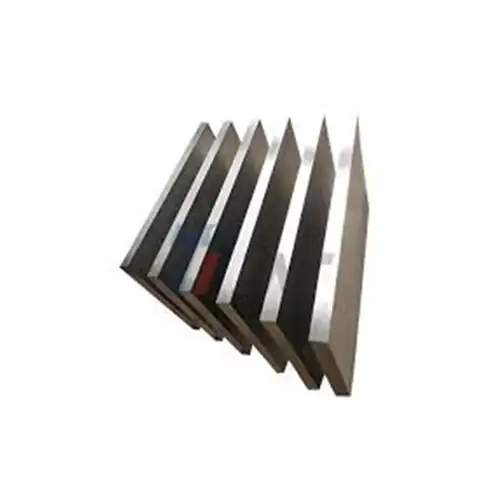Is it necessary to remove titanium plate after surgery?
 2025-06-06 14:48:36
View:389
2025-06-06 14:48:36
View:389Titanium plates have revolutionized surgical methods, especially in the domain of heart surgery. These restorative wonders have become vital instruments for specialists, giving soundness and support to delicate bones and tissues amid the mending handle. In any case, a common address that emerges among patients who have experienced surgery, including titanium inserts, is whether these plates are required to be expelled once recuperation is total. This article dives into the complexities of titanium plate usage in surgical procedures, with a specific center on titanium plate heart surgery, and investigates the components that decide whether evacuation is fundamental or prudent.
 |
|
Understanding Titanium Plates in Surgical Procedures
Titanium plates are widely used in various surgical fields, including orthopedics, neurosurgery, and cardiovascular surgery. These plates are prized for their exceptional biocompatibility, corrosion resistance, and strength-to-weight ratio. In the context of heart surgery, titanium plates play a crucial role in stabilizing the sternum after procedures that require access to the heart through the chest cavity.
The use of titanium in medical implants has been a game-changer in the field of surgery. Its unique properties allow it to integrate seamlessly with the human body, reducing the risk of rejection and complications. Titanium's durability ensures that the implants can withstand the stresses of daily life, providing long-term support to the patient.
Titanium plate heart surgery is often used to reunite the sternum after a sternotomy – a procedure where the breastbone is divided to access the heart. These plates help to hold the bone together, allowing it to heal properly and protecting the vital organs beneath. The stability provided by titanium plates is paramount in ensuring a smooth recovery and reducing the risk of complications such as sternal dehiscence, where the sternum separates after surgery.
The Longevity of Titanium Implants: To Remove or Not to Remove?
The decision to remove a titanium plate after surgery is not straightforward and depends on various factors. In many cases, titanium implants are designed to remain in the body indefinitely. The biocompatibility of titanium means that it can coexist with human tissue without causing adverse reactions, making permanent placement a viable option.
However, there are circumstances where removal might be considered:
- Infection: If an infection develops around the implant site, removal may be necessary to treat the infection effectively.
- Pain or Discomfort: Some patients may experience ongoing pain or discomfort due to the presence of the implant.
- Implant Failure: Although rare, if the implant breaks or shifts position, it may need to be removed or replaced.
- Growth Considerations: In pediatric patients, removal might be considered to accommodate bone growth.
- Patient Preference: Some patients may request removal for personal reasons, such as concerns about long-term effects or discomfort during air travel security checks.
In the case of titanium plate heart surgery, removal is generally not recommended unless complications arise. The sternum, once healed, typically does not require ongoing support from the plates. However, the potential risks associated with a second surgery to remove the plates often outweigh any perceived benefits.
It's worth noting that titanium implants are designed to be inert within the body. They do not corrode or degrade over time, and they do not release harmful substances into the surrounding tissues. This longevity is one of the primary reasons why many surgeons opt to leave titanium plates in place unless there is a compelling reason for removal.
The Removal Process and Its Implications
If removal of a titanium plate is deemed necessary, the procedure is typically less complex than the original surgery but still carries risks. The removal process involves making an incision over the implant site, carefully dissecting the surrounding tissue, and extracting the plate and any associated screws or hardware.
The implications of removing titanium plates after heart surgery can be significant:
- Surgical Risks: Any surgery carries risks such as infection, bleeding, and reactions to anesthesia.
- Recovery Time: Patients will need to undergo another recovery period, which can be disruptive to their lives.
- Potential for Instability: Removing the plates could potentially lead to instability in the healed bone, especially if removal occurs before complete healing.
- Scar Tissue: The formation of scar tissue from the original surgery can make removal more challenging and increase the risk of complications.
Given these considerations, the decision to remove titanium plates after titanium plate heart surgery is not taken lightly. Surgeons carefully weigh the potential benefits against the risks, considering each patient's individual circumstances. In many cases, the consensus is that if the implant is not causing problems, it's safer and more beneficial to leave it in place.
It's important for patients to have open and thorough discussions with their healthcare providers about the pros and cons of implant removal. Factors such as age, overall health, lifestyle, and the specific details of their surgical procedure all play a role in determining the best course of action.
Advances in medical technology continue to improve the design and functionality of titanium implants. Companies like Baoji INT Medical Titanium Co., Ltd. are at the forefront of developing high-quality titanium materials for medical use. Their expertise in producing titanium and titanium alloy products for the medical field contributes to the ongoing refinement of surgical implants, potentially reducing the need for removal in the future.
Conclusion
In conclusion, while the removal of titanium plate heart surgery is possible, it is not routinely necessary or recommended. The decision to remove these implants should be made on a case-by-case basis, considering the individual patient's needs and circumstances. As medical technology advances, we can expect to see continued improvements in implant design and materials, further reducing the likelihood that removal will be required.
For those seeking more information about medical titanium products or having specific questions about titanium implants used in surgical procedures, don't hesitate to reach out to experts in the field. You can contact Baoji INT Medical Titanium Co., Ltd. at export@tiint.com for detailed information on their range of medical titanium materials and how they contribute to advancements in surgical implant technology.
References
1. Titanium Applications in Medical Industry. (2021). Matmatch. https://matmatch.com/blog/titanium-applications-in-medical-industry/
2. Zieliński, R., Kamiński, J., Siwiera, P., & Wójcik, A. (2020). Titanium Plates Used in Sternal Closure. Archives of Medical Science, 16(4), 957-963. https://doi.org/10.5114/aoms.2019.86798
3. Removal of Orthopedic Implants: Indications, Techniques and Risks. (2020). Journal of Clinical Orthopaedics and Trauma, 11(5), 741-746. https://doi.org/10.1016/j.jcot.2020.07.002
4. Vos, D. I., & Verhofstad, M. H. J. (2013). Indications for implant removal after fracture healing: a review of the literature. European Journal of Trauma and Emergency Surgery, 39(4), 327-337. https://doi.org/10.1007/s00068-013-0283-5
5. Implant Materials. (2019). American Academy of Orthopaedic Surgeons. https://orthoinfo.aaos.org/en/treatment/implant-materials/











